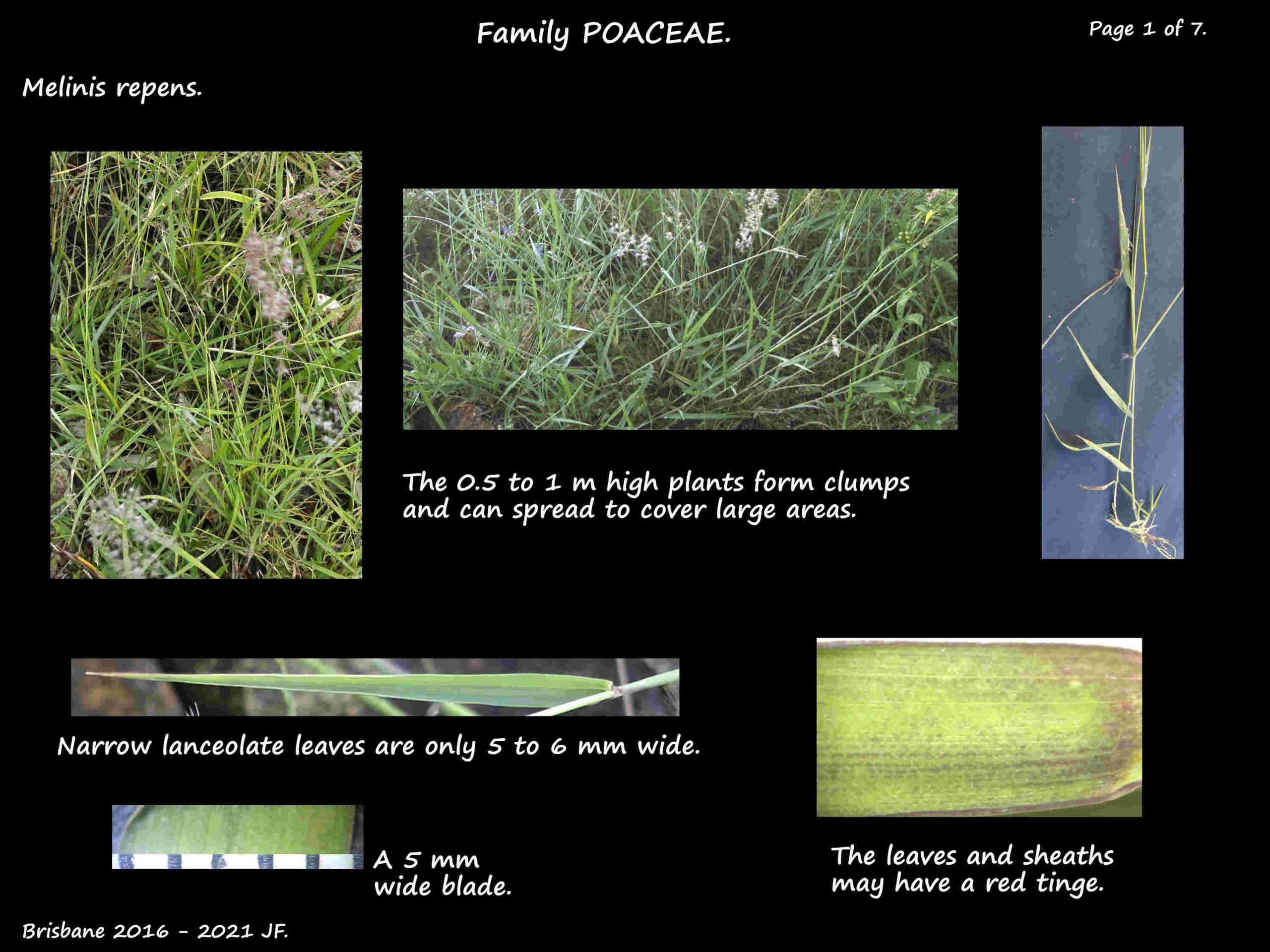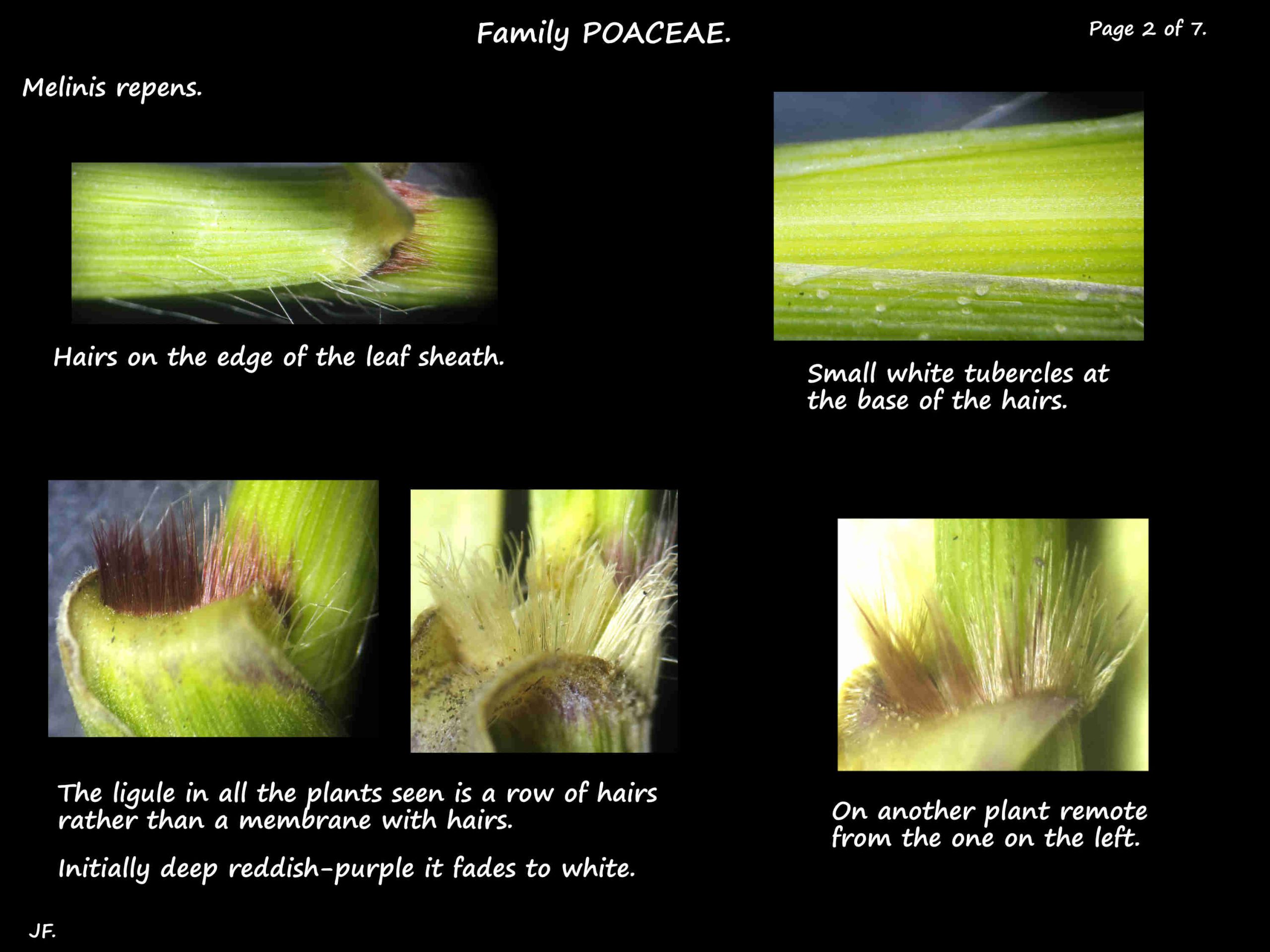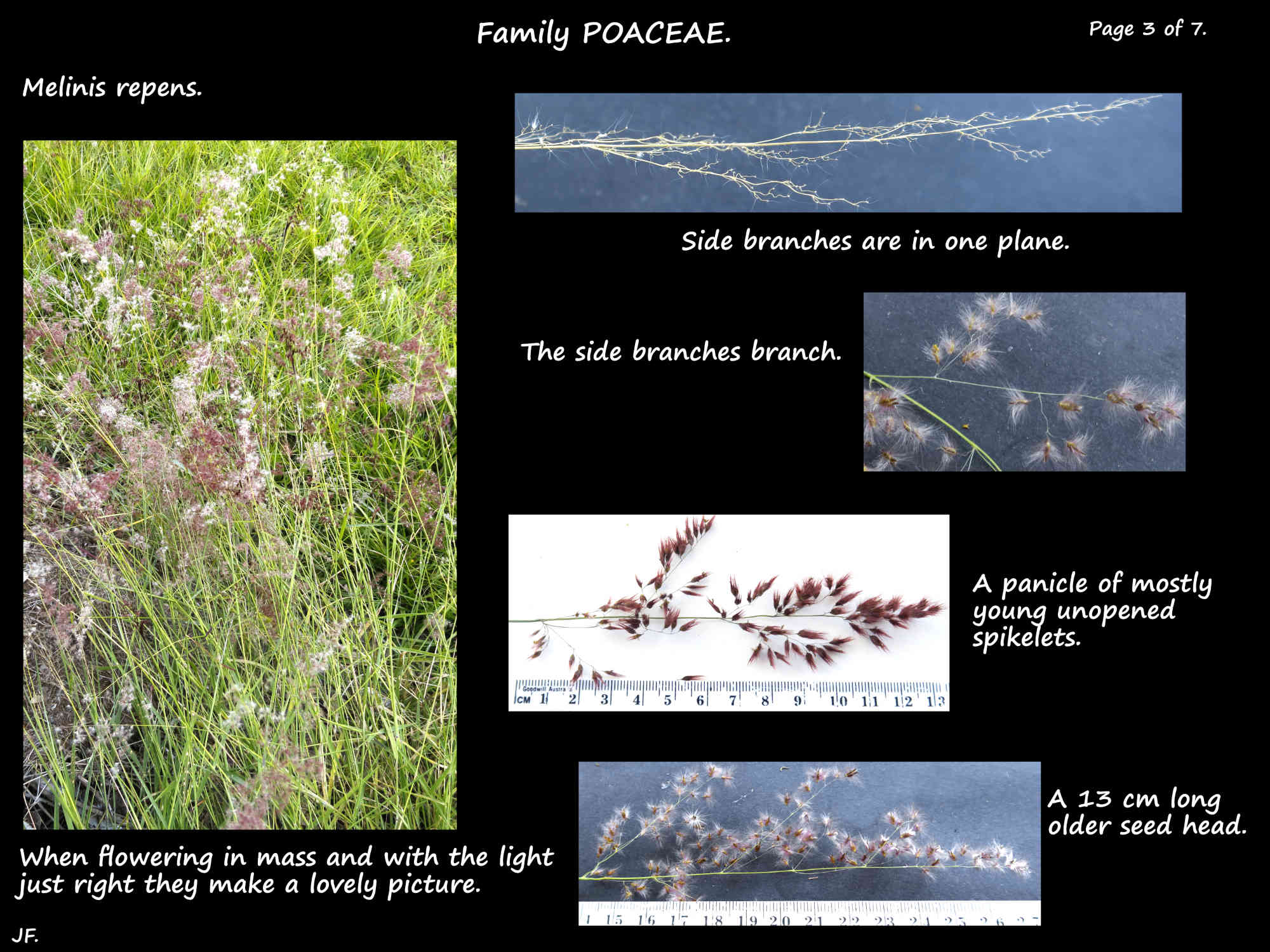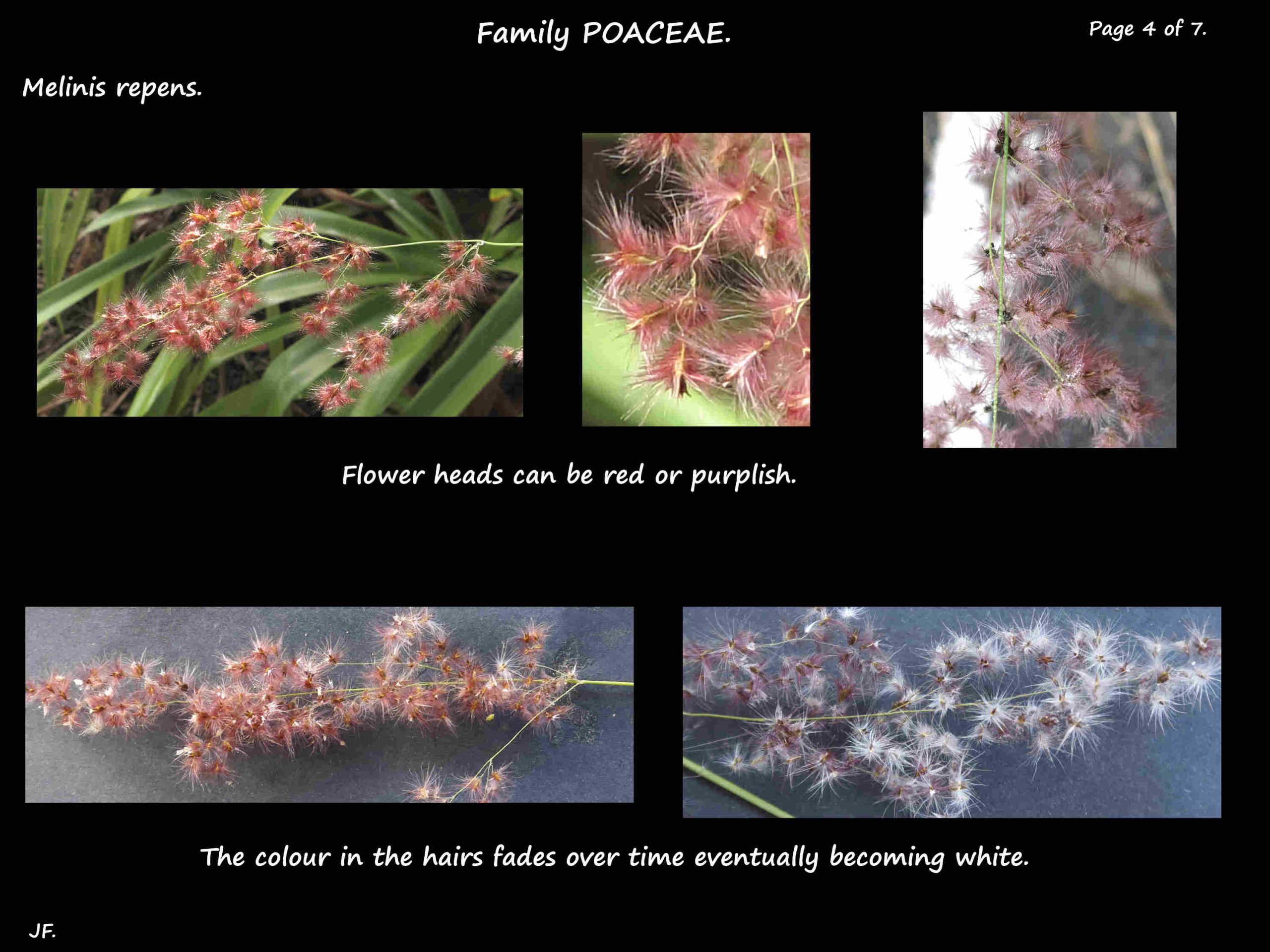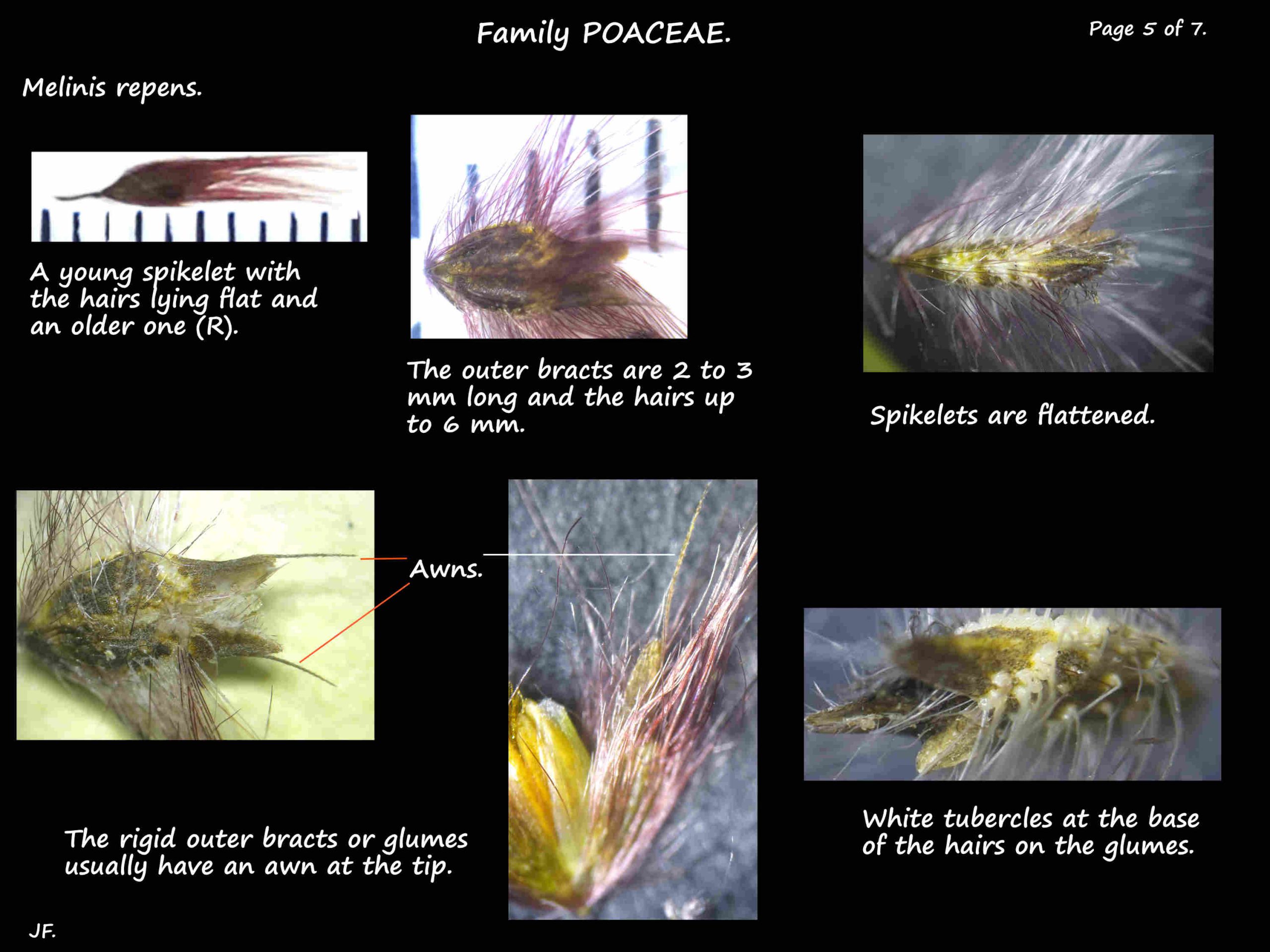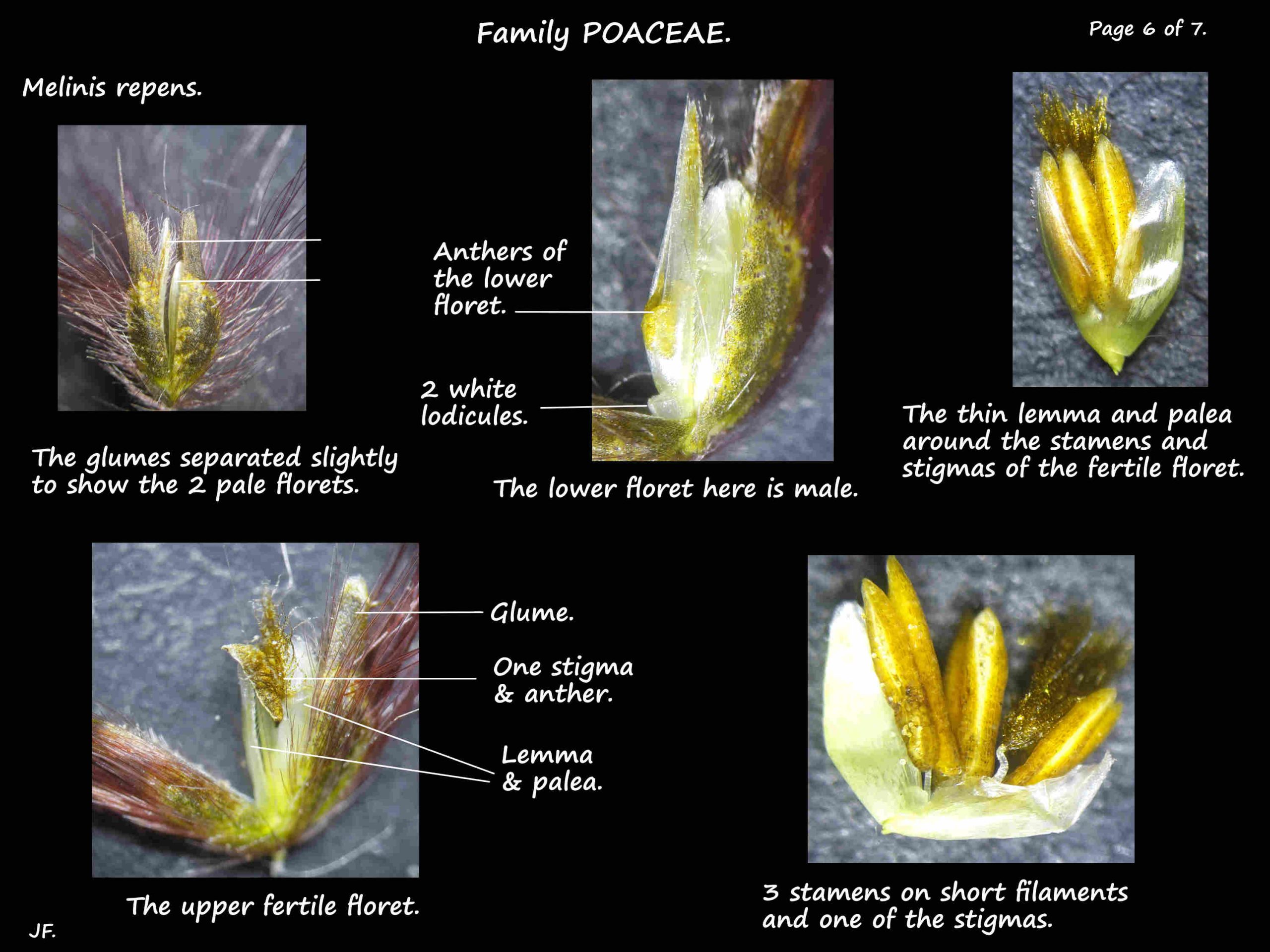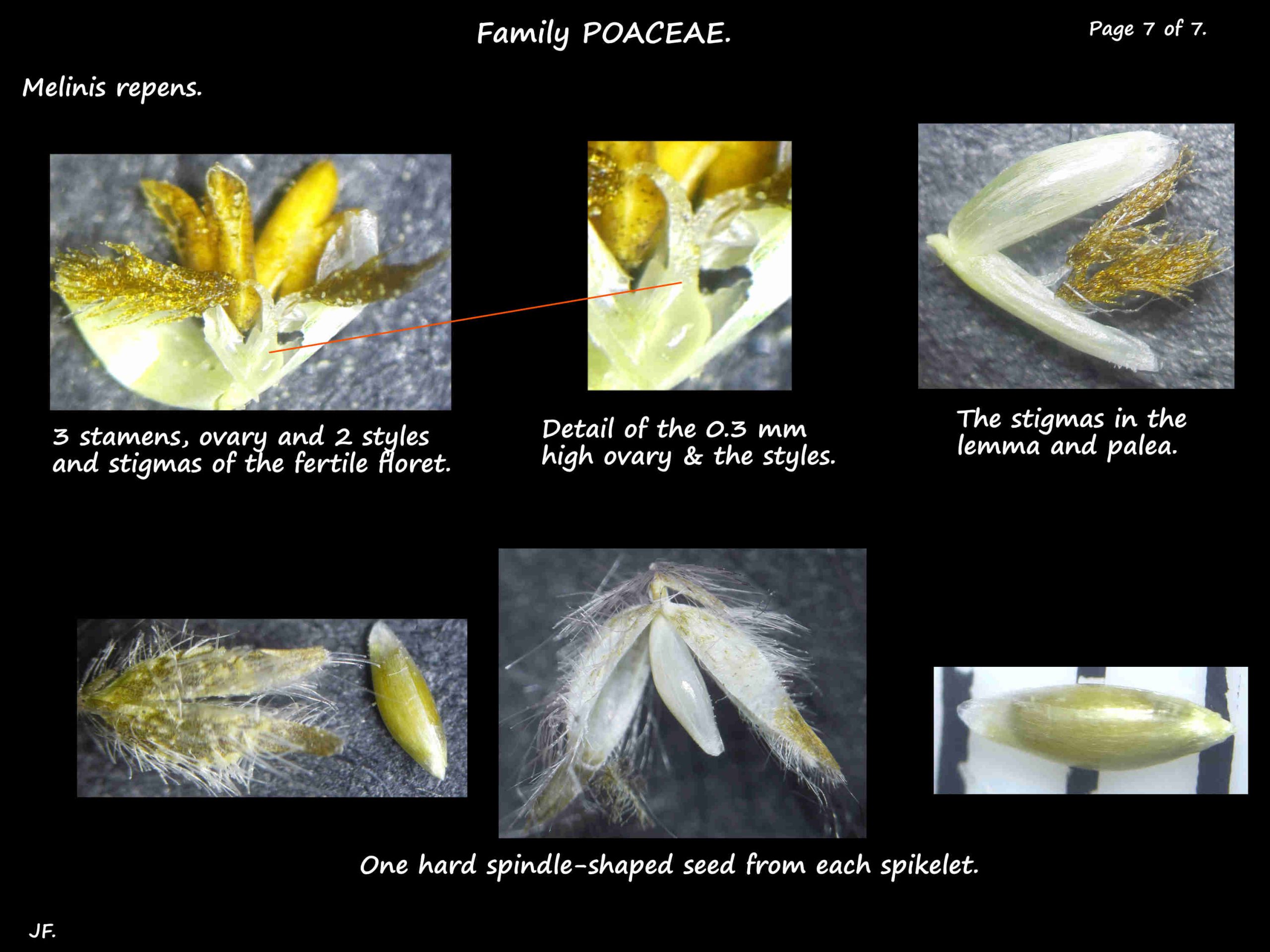Melinis repens.
In Family Poaceae the Melinis genus has 23 species.
Australia has 2 naturalised species – Melinis repens and Melinis minutiflora.
They are both common in the Brisbane area where they are environmental weeds.
Melinis repens plants are 0.5 to 1 m high and form clumps or tussocks.
The alternate leaves are narrowly lanceolate with a long tip tapering to a point.
They consist of a blade and an open sheath that runs down the stem.
The blade and sheath may have a reddish tinge.
There are hairs on the upper edges of the sheath and sometimes on the blade.
The ligule can be either a membrane with short hairs on the top or just a row of hairs.
The terminal inflorescences are a panicle with branches on both sides of the main axis or rachis.
The side branches come off singly, in pairs or in groups of 3.
They are in one plane but secondary branching gives a fuller appearance to the flower head.
The numerous flattened spikelets along the branches are 6 to 12 mm long.
There is a single spikelet at the tip of each branch.
Spikelets are covered in long, silky red or purplish hairs that fade as the spikelet ages.
Each spikelet consists of 2 florets with (1) 2 unequal, fairly rigid basal bracts or glumes.
These may have a bristle like awn at the tip.
The lower floret is sterile or a male with just the lodicules and stamens.
The bracts (lemma and palea) on the upper fertile floret are more membranous than the glumes.
The lemma is shorter than the palea and usually has an awn.
There are 2 small white lodicules at the base of the ovary.
There are 3 stamens and the ovary has 2 feathery golden stigmas on short white styles.
The pale brown, spindle-shaped seeds are less than 1.5 mm long.
(Melinis minutiflora is similar but the spikelets are smaller and have no hairs.)
J.F.
